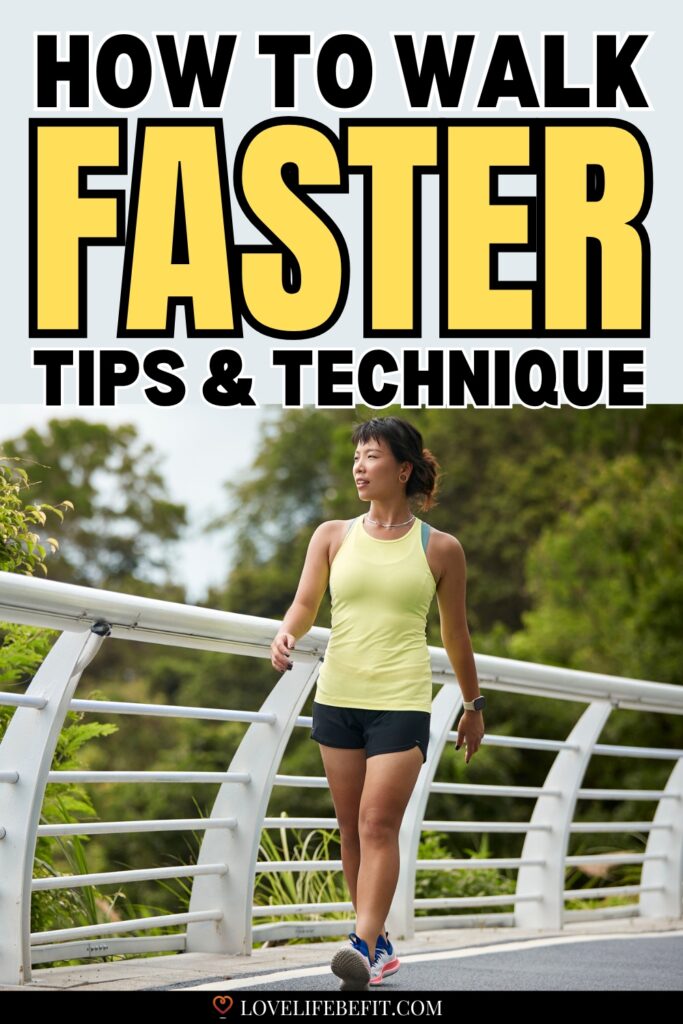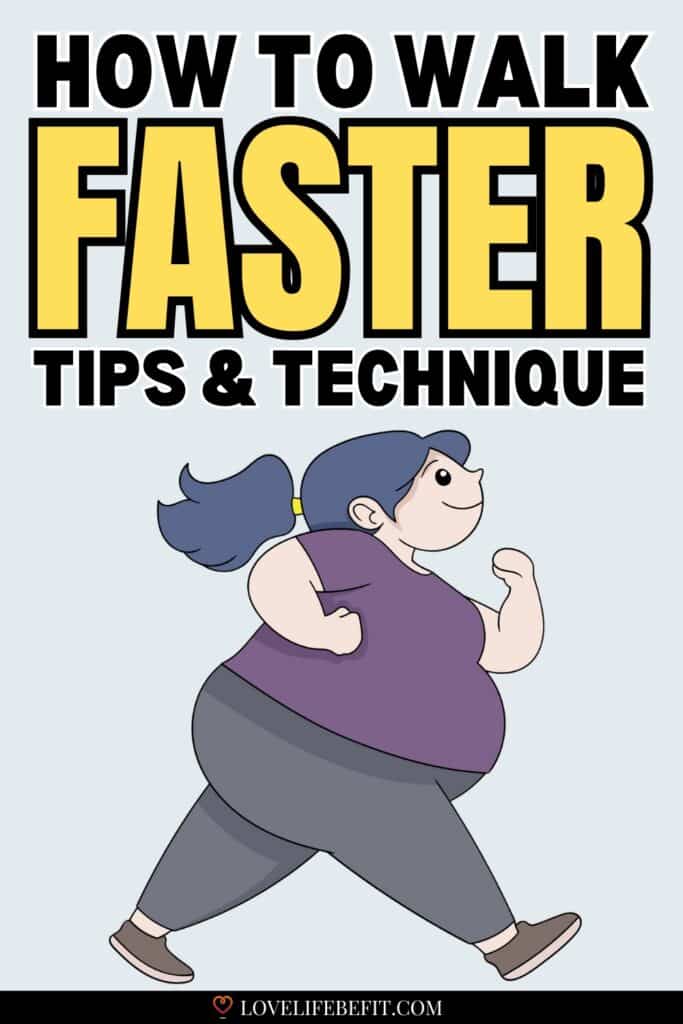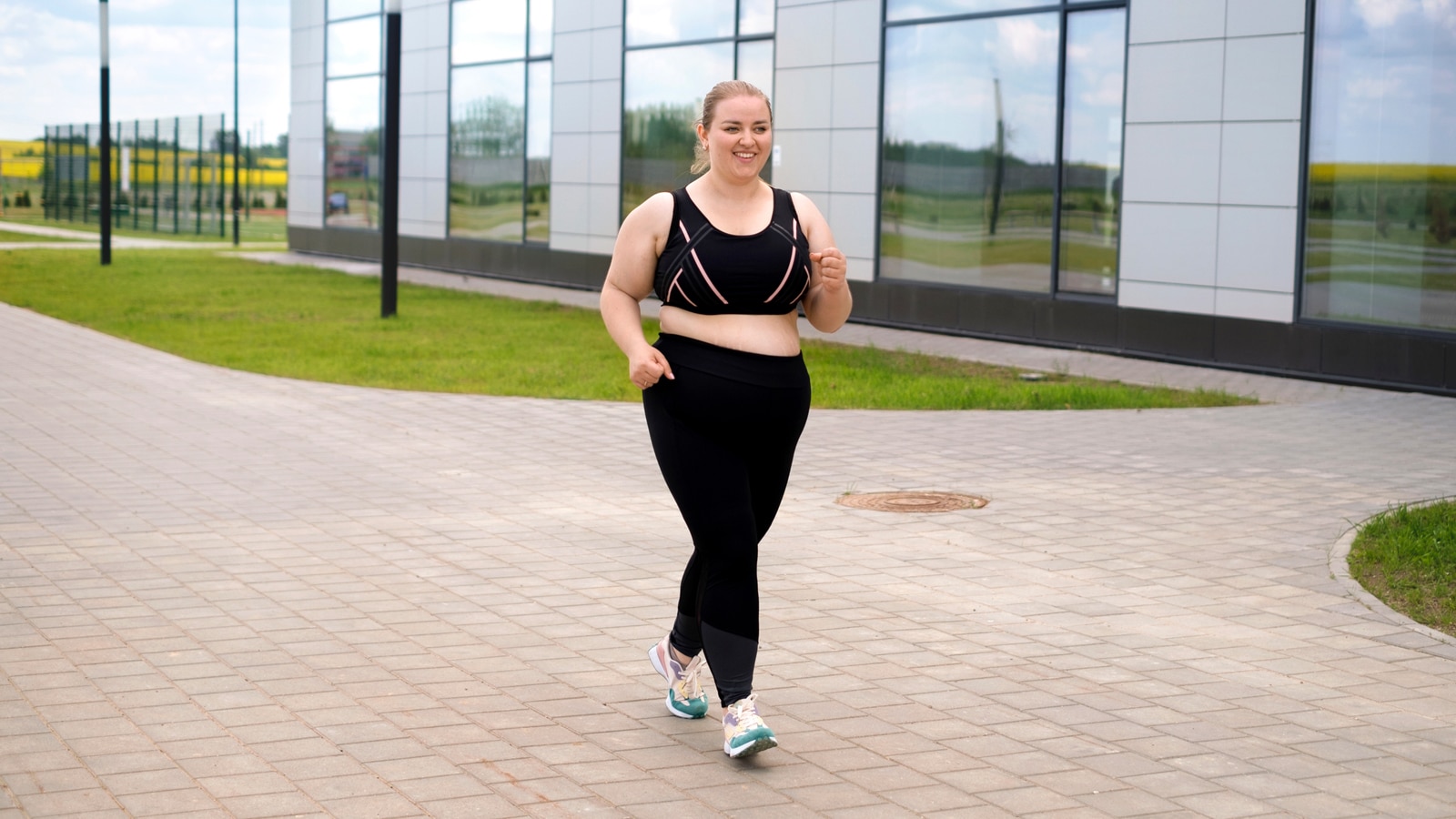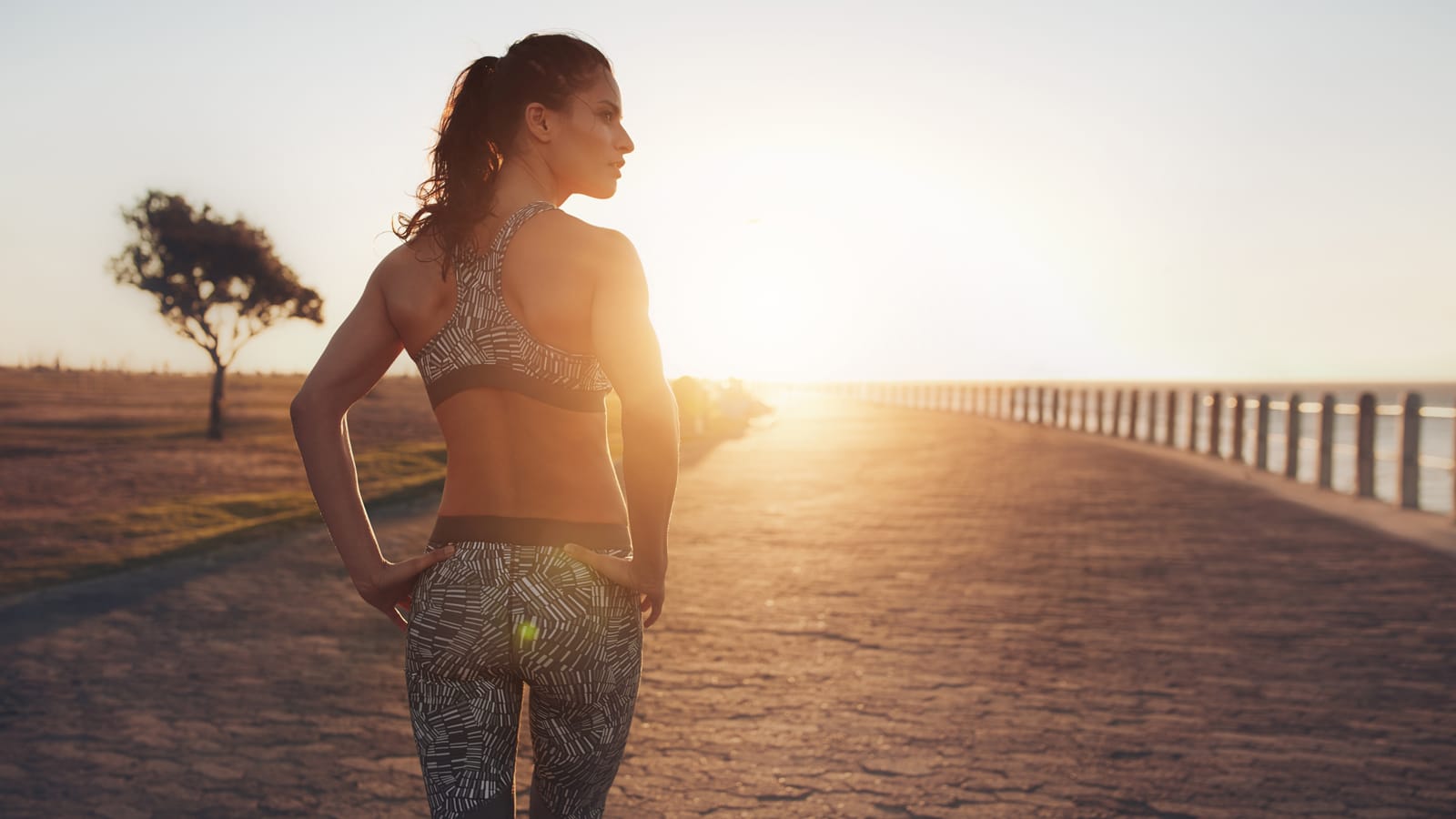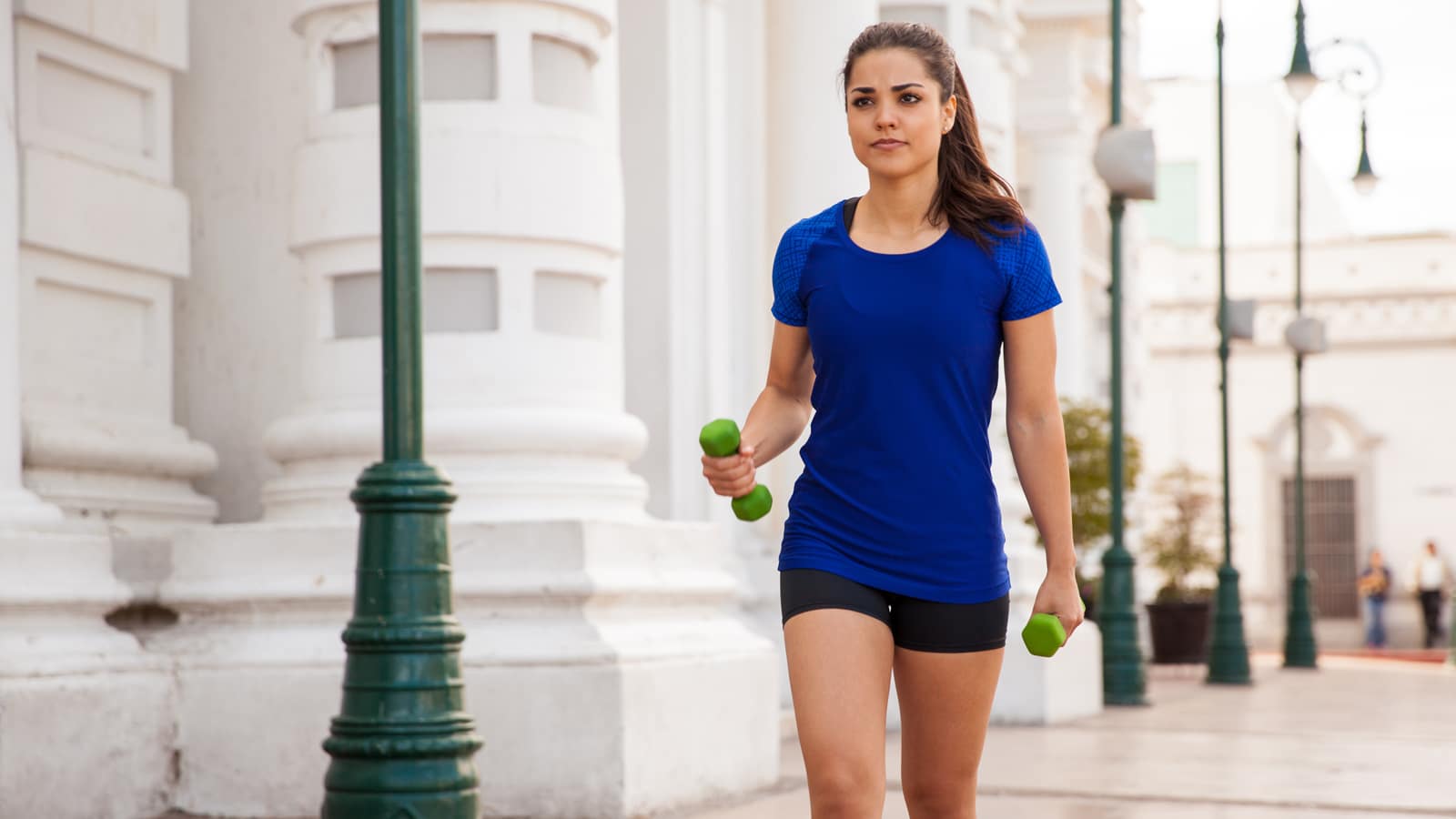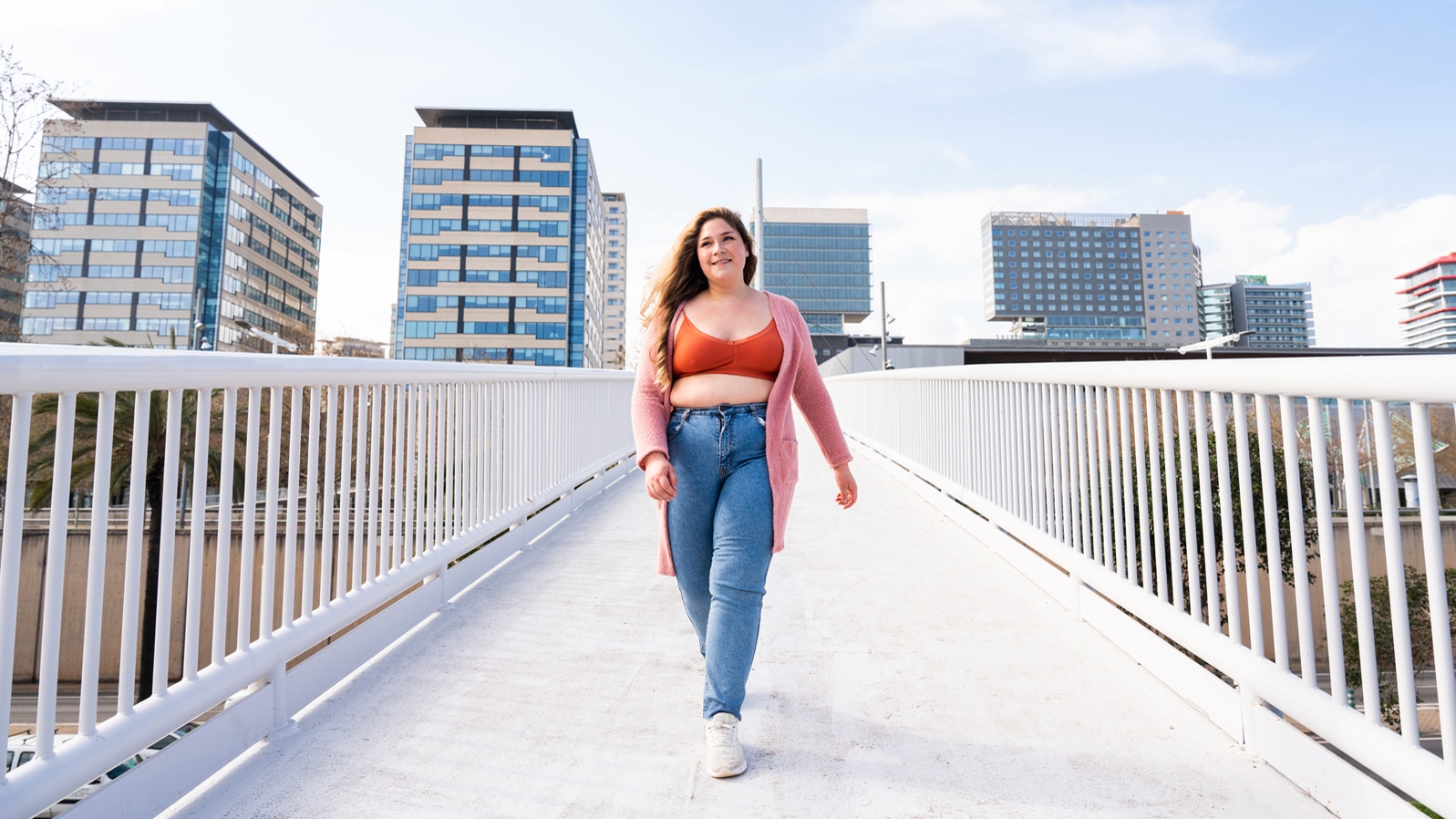4 Steps To Walk Faster
Walking faster has numerous advantages when you’re walking for weight loss or trying to improve your cardiovascular health. Instead of always walking at the same pace, there are techniques you can use to boost your walking speed. From good technique to better posture, these how-to-walk-faster tips will help you speed up your walks.
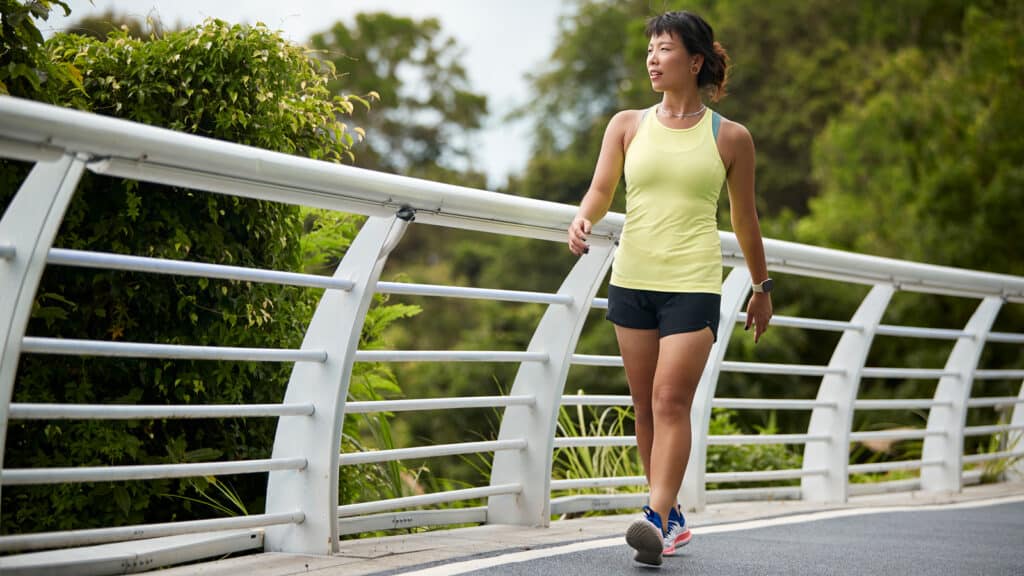
Benefits of Walking Faster
Burn More Calories: If you aim to lose weight, one of the key benefits is that walking faster will help you burn more calories. You’re challenging your body and exercising at a higher intensity. The result: more calories burned per mile of walking.
Increased Intensity: This increased intensity will boost your cardiovascular fitness and help you reach the weekly recommended levels of moderate to vigorous exercise.
Shorter Workouts: Walking faster allows you to cover more distance within a set workout time or complete a set distance more quickly.
Faster Pace: You can cover more ground in a faster time – a big help when you’re hiking!
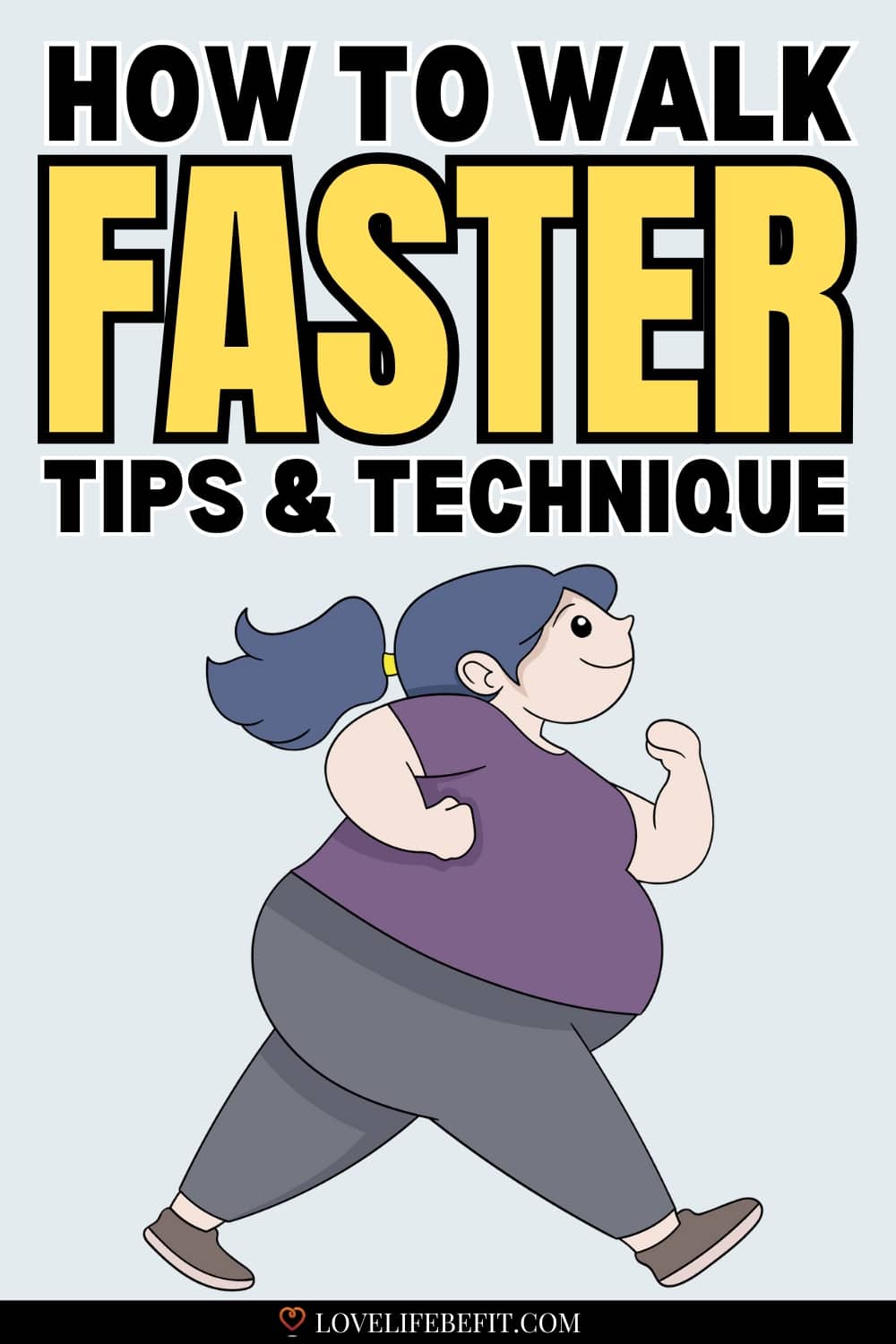
How to Walk Faster Tips
These tips cover everything from posture to finding your natural stride and interval walking.
1. Start With Good Shoes
Typical walking shoes are often too rigid to encourage a faster walking pace, especially if you’re walking on hard surfaces. Look for shoes that are both flexible and lightweight. They need to provide adequate support, but not inhibit your movement. Good walking shoes will provide ample room for your toes to spread, allowing for maximum propulsion as you propel yourself forward.
Walking shoes need to be comfortable with adequate cushioning, but not so much that you lose your sense of ground feel. Avoid shoes with a significant difference in cushioning between the heel and the forefoot, known as the drop. Shoes with a high drop put extra pressure on your shins and require more shock absorption from your hip and knees. A lower drop shoe of 4 to 6mm will make your calves work harder at first, but you’ll build stronger legs and be less prone to knee problems.
2. Improve Your Walking Form
It helps to think about the different parts of your body separately, such as arms, torso, and feet, then put them all together for fluid motion.
Your Arms
- Swing your arms back and forward with your elbow at approximately 90 degrees, keeping your arms close to your sides.
- Relax your hands and ensure your shoulders don’t rise up – keep them down and loose.
- Your arms will sync in time with your legs and help you walk faster.
Your Body
- Walk tall and upright. Don’t lean back or stick your bum out.
- Engage your core. Zip everything up. It will keep you stable and help to engage your leg muscles.
- Look forward 10-20 feet ahead.
- Keep your shoulders relaxed and your head level.
- Avoid side-to-side motion with your hips and keep your pelvis level as you walk forward.
Your Feet
- Land on the fleshy part of your heel.
- As you move forward, your foot rolls from heel to toe, bringing your foot behind your body.
- Power off your back foot with the ball of your foot and toes.
This walking technique post includes extra tips for walking properly.
3. Find Your Natural Stride
The biggest mistake people make when they’re trying to walk faster is over-striding. This can lead to injuries and will have little impact on your walking speed. Instead, to walk faster, aim to take more steps rather than longer steps: you’re increasing your cadence – the number of steps you take per minute.
Find your natural stride length, a step length that feels comfortable without straining your muscles, and make your legs work faster. When you drive your leg forward, don’t waste energy by raising your knee; focus on maintaining forward motion. The drive comes from your back leg and uses those powerful glute muscles.
4. Practice
The only way to walk faster is to practice! Spend the first 10 minutes of your walk warming up and focusing on your technique. Once you’ve warmed up, try these beginner walking intervals:
Beginner’s Interval Walking:
- Warm-up: 10 minutes, moderate pace.
- Repeat the following set 4 – 6 times:
- 1-minute fast or power walking,
- 2 minutes of recovery walking.
- Cool-down: 5 minutes, easy pace.
Aim to practice walking faster 2 to 3 times a week. However, if you experience new aches and pains, such as shin pain, it may be a sign that you’re pushing too hard. Take a day’s rest and make sure you work on building your speed gradually.
As you become fitter and stronger, try these alternative walking workouts to enhance your fitness and walk faster.
